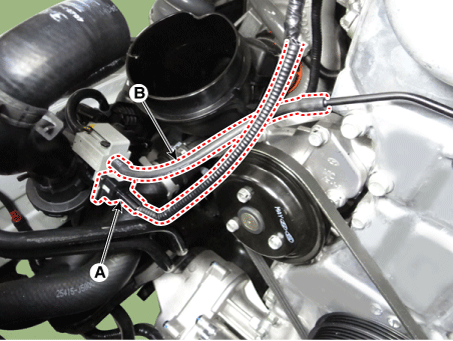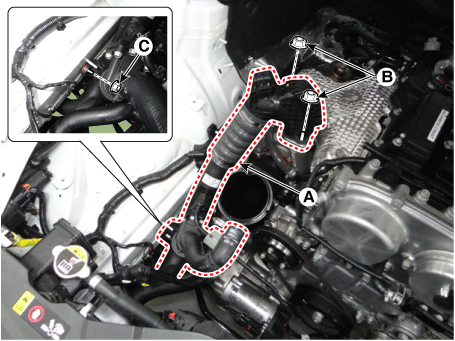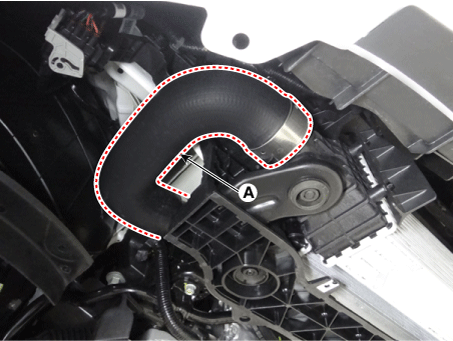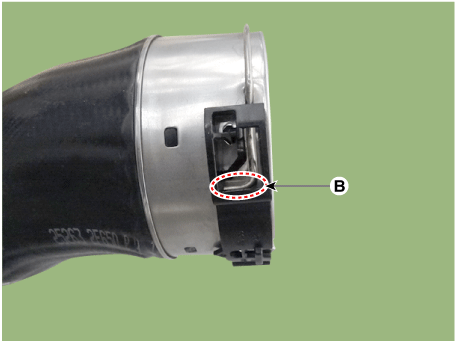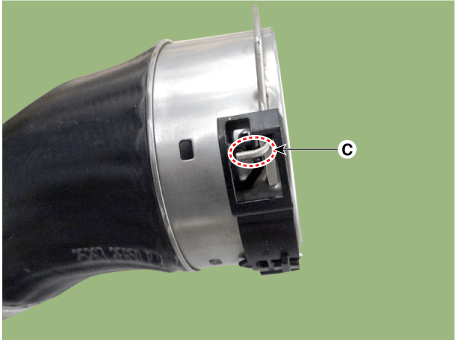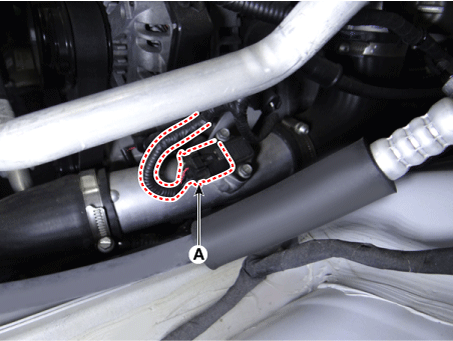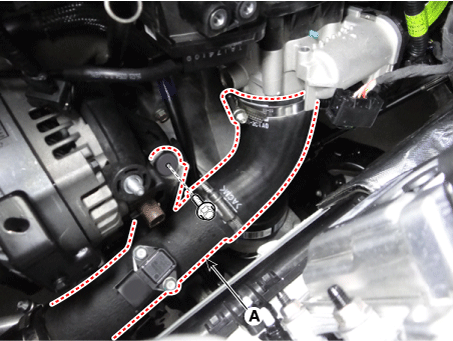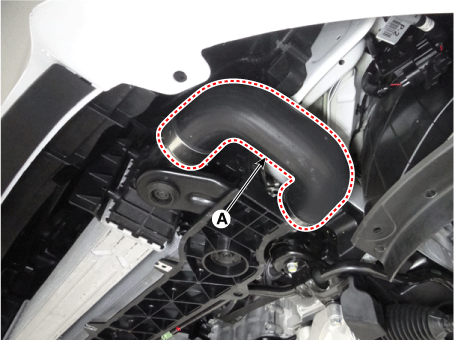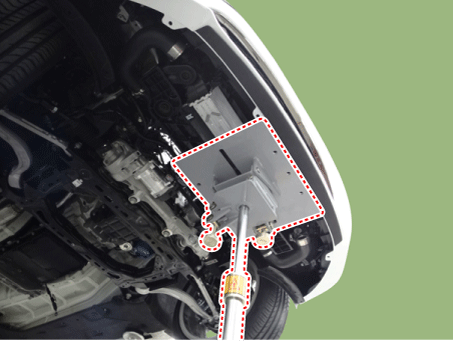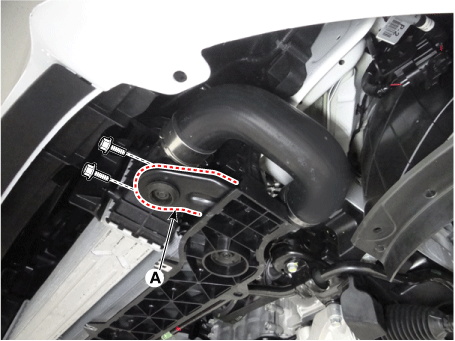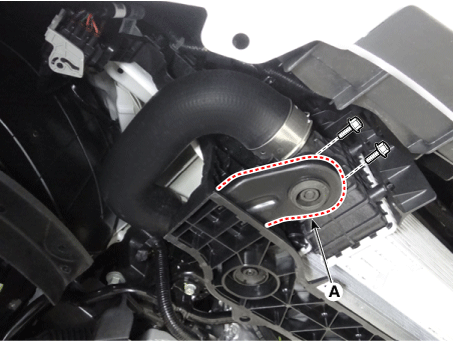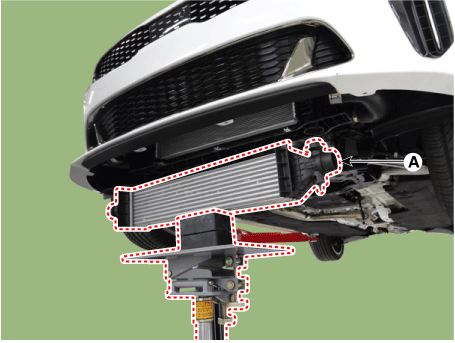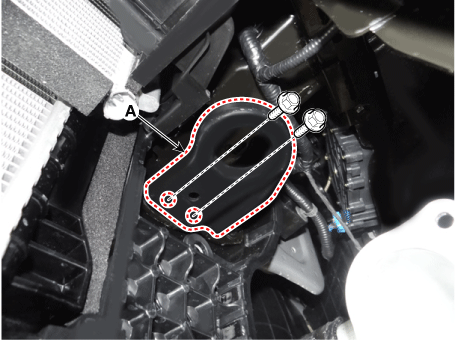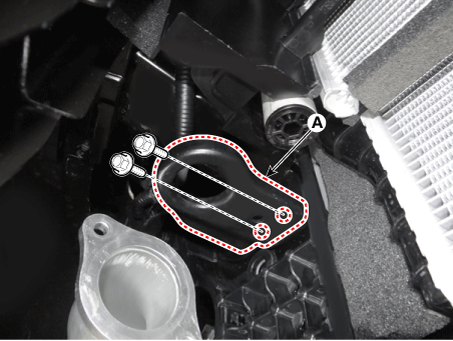Kia Stinger: Intake And Exhaust System / Intercooler
Components and components location
| Components |
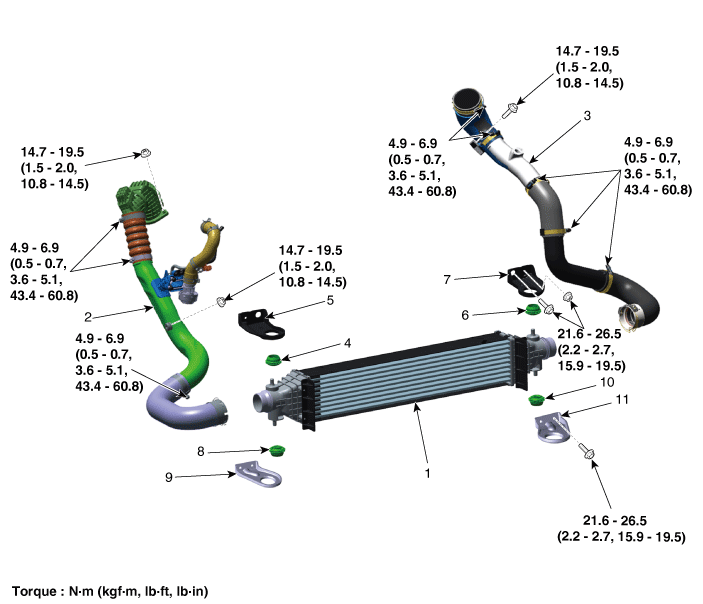
| 1. Intercooler 2. Intercooler inlet hose & pipe 3. Intercooler outlet hose & pipe 4. Intercooler upper mounting insulator (RH) 5. Intercooler upper mounting bracket (RH) 6. Intercooler upper mounting insulator (LH) |
7. Intercooler upper mounting
bracket (LH) 8. Intercooler lower mounting insulator (RH) 9. Intercooler lower mounting bracket (RH) 10. Intercooler lower mounting insulator (LH) 11. Intercooler lower mounting bracket (LH) |
Repair procedures
| Removal and Installation |
Intercooler Inlet Hose & Pipe
| 1. |
Remove the air intake hose. (Refer to Intake and Exhaust System - "Air Cleaner") |
| 2. |
Disconnect the recirculation valve connector (A) and the vacuum hose (B).
|
| 3. |
Remove the intercooler inlet hose & pipe assembly (A).
|
| 4. |
Remove the engine room front under cover. (Refer to Engine and Transmission Assembly - "Engine Room Under Cover") |
| 5. |
Remove the intercooler inlet hose (A).
|
| 6. |
Install in the reverse order of removal. |
Intercooler outlet Hose & Pipe
| 1. |
Disconnect the booster pressure sensor connector (A).
|
| 2. |
Remove the intercooler outlet hose & pipe assembly (A).
|
| 3. |
Remove the engine room front under cover. (Refer to Engine and Transmission Assembly - "Engine Room Under Cover") |
| 4. |
Remove the intercooler outlet hose (A).
|
| 5. |
Install in the reverse order of removal. |
Intercooler
| 1. |
Remove the engine room front under cover. (Refer to Engine and Transmission Assembly - "Engine Room Under Cover") |
| 2. |
Disconnect the intercooler inlet hose (A).
|
| 3. |
Disconnect the intercooler outlet hose (A).
|
| 4. |
Install the jack under the intercooler to support the intercooler.
|
| 5. |
Remove the intercooler lower mounting bracket (A).
[LH]
[RH]
|
| 6. |
Remove the intercooler (A).
|
| 7. |
Remove the intercooler upper mounting bracket (A).
[LH]
[RH]
|
| 8. |
Install in the reverse order of removal. |
 Air Cleaner
Air Cleaner
Components and components location
Components
1. Air cleaner assembly
2. Air intake hose
3. Air cleaner adapter
4. Air duct
Repair procedures
...
 Intake Manifold
Intake Manifold
Components and components location
Components
1. Intake manifold
2. VCM actuator
3. Clip
4. VCM shaft
5. Intake manifold gasket
6. Intake manifold br ...
Other information:
Kia Stinger CK 2018-2025 Service Manual: Heater Core
Repair procedures Replacement 1. Disconnect the negative (-) battery terminal. 2. After loosening the nuts and bolts, remove the main crash pad and cowl cross bar assembly altogether. (Refer to Heater - "Heater Unit") ...
Kia Stinger CK 2018-2025 Service Manual: Oil Pan
Repair procedures Removal 1. Remove the engine room front under cover and side cover. (Refer to Engine and Transmission Assembly - "Engine Room Under Cover") 2. Drain the engine oil. (Refer to Lubrication System - "Engine O ...

